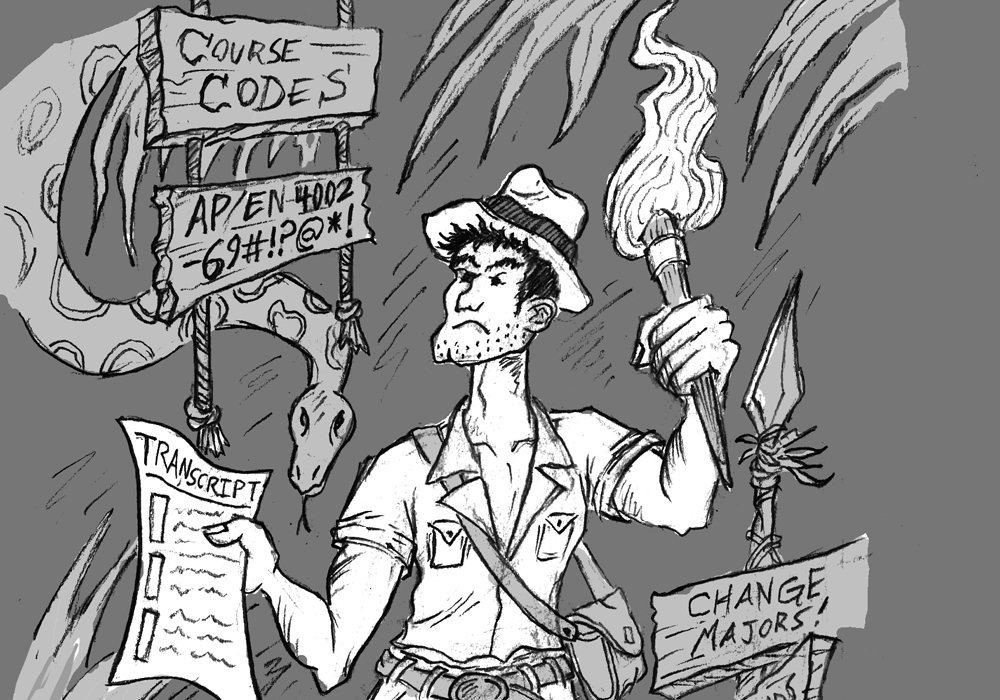University is a fantastic time to explore your interests and discover your passions. Or at least, it should be.
Truth is, you better be prepared to be an Indiana Jones-level adventurer if you’re going to stray off the beaten path. Navigating the various course requirements and necessary prerequisites is like traipsing through a jungle of confusing rules and countless course codes.
There was a second-year English course I wanted to take, and after checking the course site and description, I found it clearly stated that the course was open to first, second, and third-year students. “Great,” I thought, as I still had a first-year course in the same program of study that I needed to complete. So, I added it to my timetable.
I was later chagrined to hear from a Liberal Arts and Professional Studies faculty member that second-year English courses cannot be taken until all first-year English courses are completed. I sent an email to the professor of my second-year course asking if I needed to drop the course because I lacked a prerequisite, and if I had misunderstood his course description. Essentially, he told me, “I don’t know. Go ahead and take my course, though you may struggle. But I’m not concerned about administrative stuff.”
To me, this signifies that there is a fundamental lack of communication between the department and the faculty. Don’t get me wrong, I’m not blaming York’s overworked and stressed-out faculty. Goodness knows how challenging it is for any professor to figure out where a student is in his or her academic career. With innumerable courses, prerequisites, and constantly shifting program requirements, how are they supposed to begin to help us students?
We have academic advisers here at York, but I have often found the advice offered to be overly brief and uninformative. They offer me a collection of codes and course descriptions that are often far too vague, and then I’m told to pick what I need. With evolving program requirements and murky rules regarding prerequisites and the order in which I must complete courses, figuring out what I need is a massive task. At this point, planning and completing my education is more challenging than taking my actual courses.
When making sense of program requirements is this opaque, it discourages students from taking chances and exploring options. Out of fear of wasting valuable funds and time, students feel pressured to stick closely to the program they chose at the outset and to take their courses in the simplest, most risk-averse manner possible. This fear kills a student’s wish to diversify or explore. Heaven forbid you realize you want to study a different program, or need to take courses in a way that doesn’t conform to the rigid four-year structure.
Of course a student has to take responsibility for his or her academic life. As a student, your education belongs to you and cannot be decided by anyone else. But is it unreasonable to say that if courses were offered in a more accessible manner, we’d all have a more enjoyable education and be able to put our efforts into course content, rather than jumping through the right hoops? Couldn’t courses be streamlined so the order that you can take them is clear and unambiguous? What if academic advising didn’t consist of simply shoving a paper under a student’s nose with a list of numbers, but was a discussion between adviser and student about where the student wants to go, and the steps needed to get there?
I know that students, faculty members, academic advisors, and administrative members are all separate pieces of the constantly shifting ecosystem, and that getting us all on the same page is a near-impossible task. But couldn’t we bring just a little bit more harmony to this discordant jungle that we call higher education?



